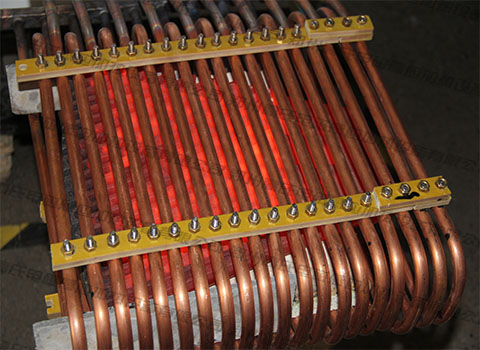The jaw plate is the main part of the jaw crusher. Due to the very harsh working conditions and complex stress, the jaw plate has to bear large impact, extrusion, shearing and contact fatigue during the working process, which is very Easy to wear and consume a lot. Therefore, the requirements for the jaw plate must have good wear resistance and certain toughness. In the process of producing the jaw plate, in addition to selecting the appropriate high-manganese steel cast iron as the material, it is also necessary to heat-treat it through a high-frequency induction heating power supply.
At 650 to 700 degrees Celsius, if the high manganese steel is preheated for a long time, hard and brittle carbides will be precipitated. Generally, the amount of heating is comprehensively determined according to the thickness and size of the jaw plate, and the heating time is usually 3 to 4 hours. Therefore, it is necessary to heat slowly, and the heating should not be too fast below 650°C, generally controlled below 60°C/h, otherwise the internal structure of the high manganese steel will not be able to resist the thermal stress and crack. At the same time, it should also be noted that due to the reduced thermal conductivity of steel, if the temperature rises too fast, there will be a large temperature difference between the internal and external temperatures of the part, which may cause cracking of the casting.
In the process of heat treatment of the jaw plate by the high-frequency induction heating power supply, in order to prevent oxidation or decarburization, it needs to be heated in a protected environment, so special attention must be paid to three The first link: it must be heated to above 950 ° C; sufficient heat preservation so that the carbides can be fully dissolved into the austenite; the cooling speed must be fast, otherwise the precipitation of carbides will cause cracks in the jaw plate, so it must be cooled quickly to avoid Carbide is precipitated from the austenite to obtain an austenite structure. Therefore, special attention must be paid to the above three aspects during heat treatment.




 en
en  cn
cn  jp
jp  ko
ko  de
de  es
es  it
it  ru
ru  pt
pt  vi
vi  th
th  pl
pl 







 GS-ZP-1200
GS-ZP-1200


